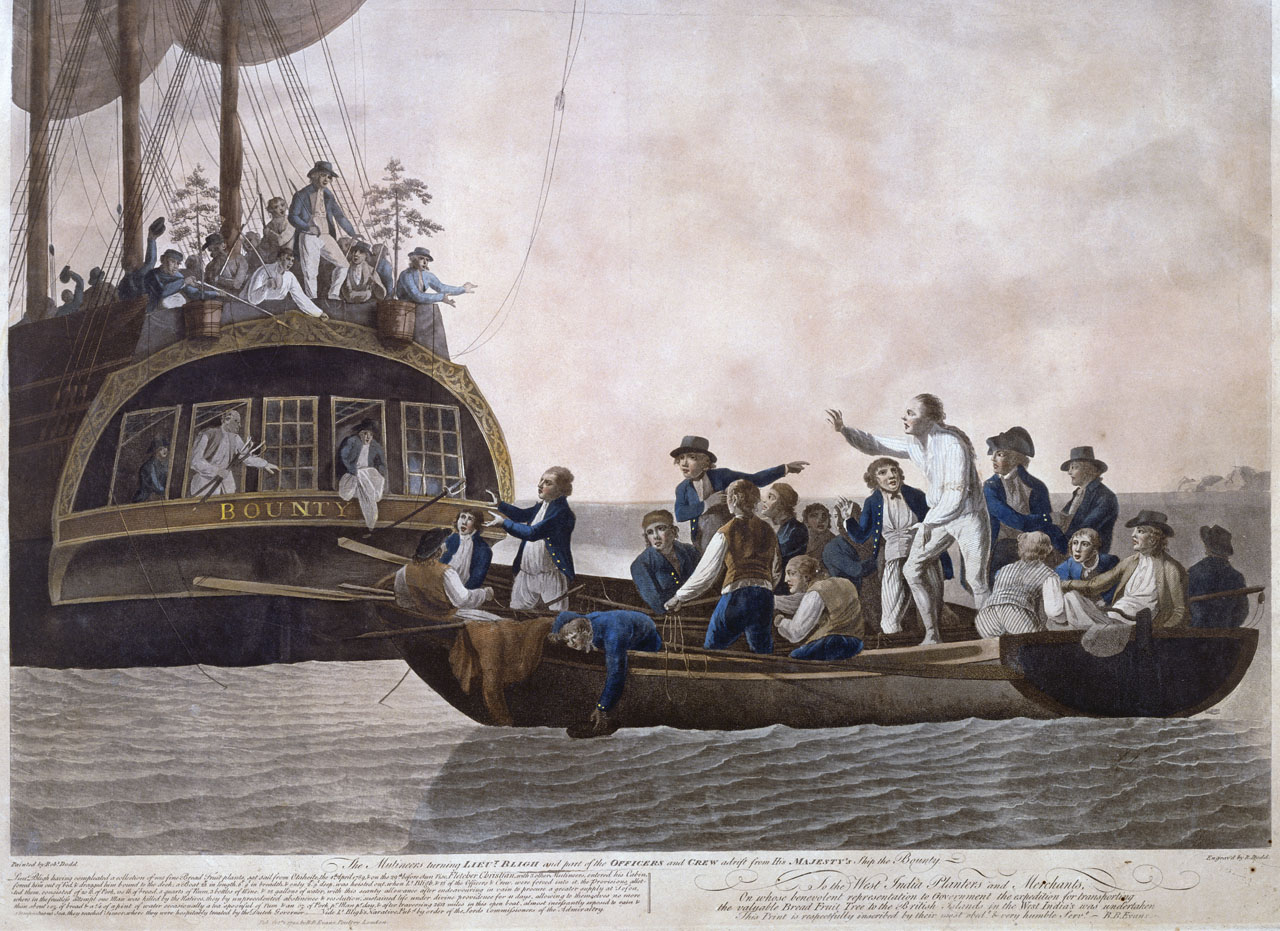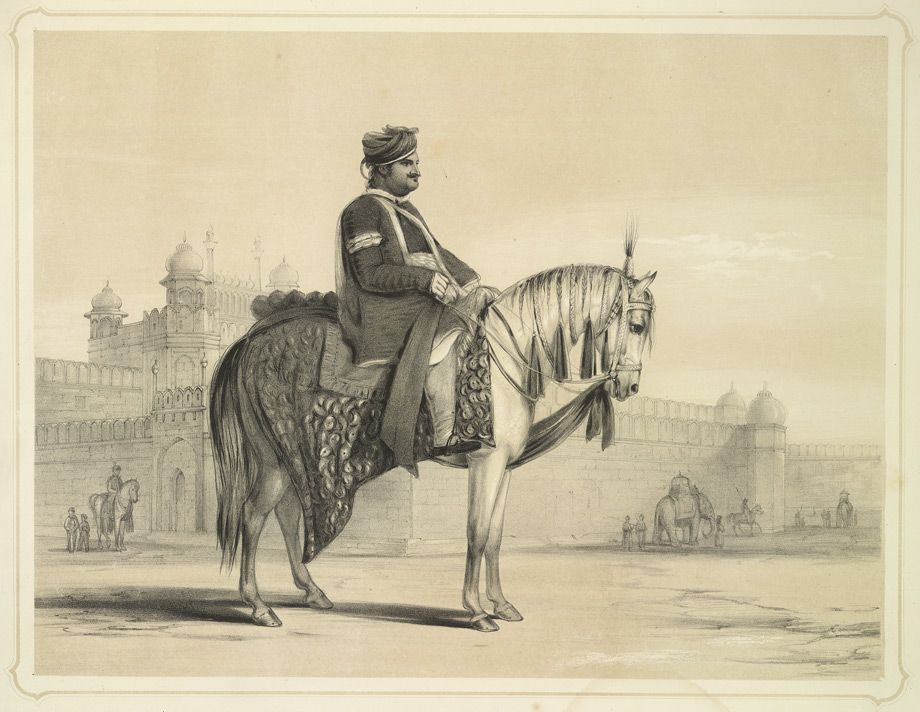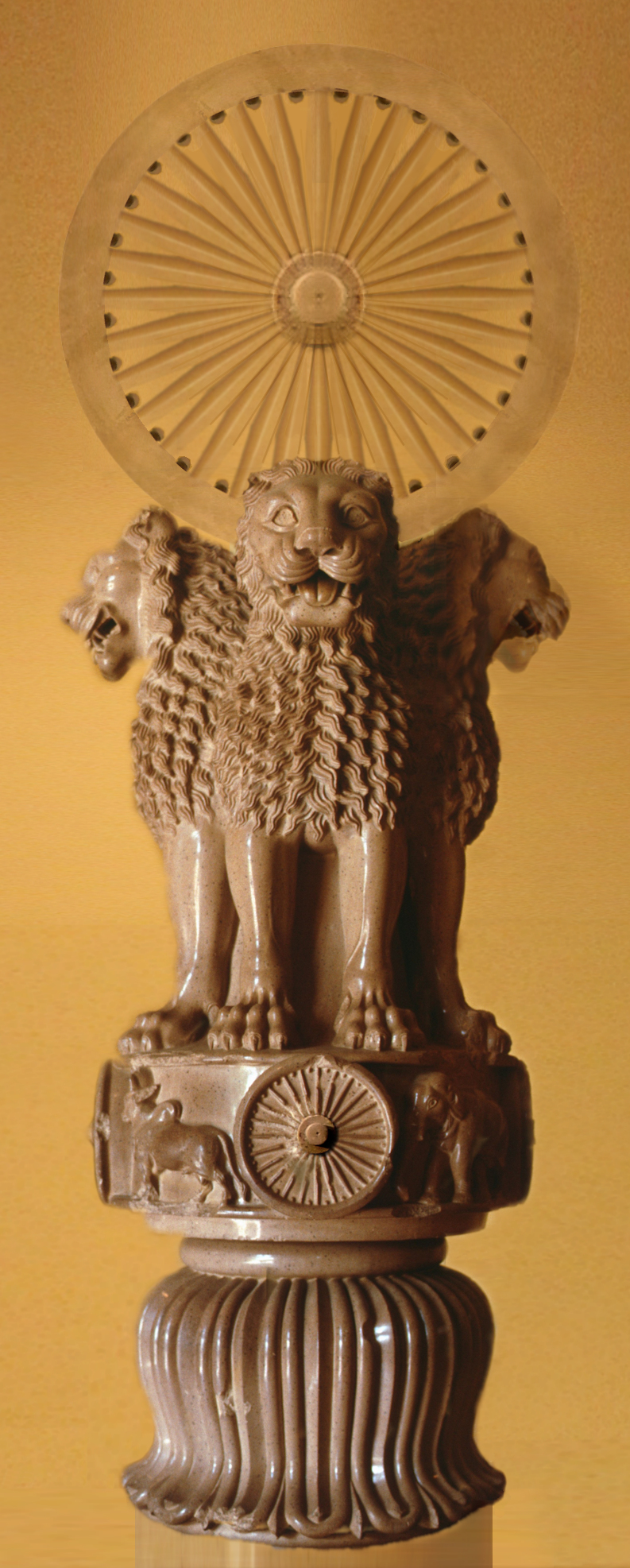|
Mutiny Memorial
The Mutiny Memorial, now known as Ajitgarh, is a memorial situated on the Ridge New Delhi.List of Monuments of National Importance Archaeological Survey of India. It was built in memory of all those who had fought in the Delhi Field Force, British and Indian, during the Indian Revolt of 1857. History Erected by the Central Public Works Department, Public Works Department of the British Raj in 1863, the memorial was hastily designed and constructed. It received much public criticism on completion. In 1972, the 25th anniversary of India's independence, the Indian government renamed the monument 'Ajitgarh' ('Place of the Unvanquished') and erected a plaque stating that the 'enemy' mentioned on the memorials were 'immortal Martyr, martyrs for Indian freedom'. ...
|
Mutiny Ajitgarh
Mutiny is a revolt among a group of people (typically of a military or a crew) to oppose, change, or remove superiors or their orders. The term is commonly used for insubordination by members of the military against an officer or superior, but it can also sometimes mean any type of rebellion against any force. Mutiny does not necessarily need to refer to a military force and can describe a political, economic, or power structure in which subordinates defy superiors. During the Age of Discovery, mutiny particularly meant open rebellion against a ship's Captain (nautical), captain. This occurred, for example, during Ferdinand Magellan's journeys around the world, resulting in the killing of one mutineer, the Capital punishment, execution of another, and the marooning of others; on Henry Hudson's ''Discovery (1602 ship), Discovery'', resulting in Hudson and others being set adrift in a boat; and the famous mutiny on the Bounty, mutiny on the ''Bounty''. Mutiny is widely consider ... [...More Info...] [...Related Items...] OR: [Wikipedia] [Google] [Baidu] |
Sandstone
Sandstone is a Clastic rock#Sedimentary clastic rocks, clastic sedimentary rock composed mainly of grain size, sand-sized (0.0625 to 2 mm) silicate mineral, silicate grains, Cementation (geology), cemented together by another mineral. Sandstones comprise about 20–25% of all sedimentary rocks. Most sandstone is composed of quartz or feldspar, because they are the most resistant minerals to the weathering processes at the Earth's surface. Like uncemented sand, sandstone may be imparted any color by impurities within the minerals, but the most common colors are tan, brown, yellow, red, grey, pink, white, and black. Because sandstone beds can form highly visible cliffs and other topography, topographic features, certain colors of sandstone have become strongly identified with certain regions, such as the red rock deserts of Arches National Park and other areas of the Southwestern United States, American Southwest. Rock formations composed of sandstone usually allow the p ... [...More Info...] [...Related Items...] OR: [Wikipedia] [Google] [Baidu] |
Gothic Revival Architecture In India
Gothic or Gothics may refer to: People and languages *Goths or Gothic people, a Germanic people **Gothic language, an extinct East Germanic language spoken by the Goths **Gothic alphabet, an alphabet used to write the Gothic language ** Gothic (Unicode block) * Geats, sometimes called Goths, a large North Germanic tribe who inhabited Götaland Arts and entertainment Genres and styles * Gothic art, a style of medieval art * Gothic architecture, an architectural style * Gothic fiction, a loose literary aesthetic of fear and haunting * Gothic rock, a style of rock music * Goth subculture, developed by fans of gothic rock Gaming * ''Gothic'' (series), a video game series ** ''Gothic'' (video game), 2001 ** Gothic II, 2002 *** Gothic II: Night of the Raven, 2003 ** Gothic 3, 2006 ** ''Gothic'' (upcoming video game), a remake of the 2001 video game Music * Symphony No. 1, or "The Gothic", Havergal Brian * ''Gothic'' (Paradise Lost album), 1991 * ''Gothic'' (Nox Arcana album), ... [...More Info...] [...Related Items...] OR: [Wikipedia] [Google] [Baidu] |
Indian Military Memorials And Cemeteries
Indian or Indians may refer to: Associated with India * of or related to India ** Indian people ** Indian diaspora ** Languages of India ** Indian English, a dialect of the English language ** Indian cuisine Associated with indigenous peoples of the Americas * Indigenous peoples of the Americas ** First Nations in Canada ** Native Americans in the United States ** Indigenous peoples of the Caribbean ** Indigenous languages of the Americas Places * Indian, West Virginia, U.S. * The Indians, an archipelago of islets in the British Virgin Islands Arts and entertainment Film * ''Indian'' (film series), a Tamil-language film series ** ''Indian'' (1996 film) * ''Indian'' (2001 film), a Hindi-language film Music * Indians (musician), Danish singer Søren Løkke Juul * "The Indian", an unreleased song by Basshunter * "Indian" (song), by Sturm und Drang, 2007 * "Indians" (song), by Anthrax, 1987 * Indians, a song by Gojira from the 2003 album '' The Link'' Other uses i ... [...More Info...] [...Related Items...] OR: [Wikipedia] [Google] [Baidu] |
British Military Memorials And Cemeteries
British may refer to: Peoples, culture, and language * British people, nationals or natives of the United Kingdom, British Overseas Territories and Crown Dependencies. * British national identity, the characteristics of British people and culture * British English, the English language as spoken and written in United Kingdom of Great Britain and Northern Ireland and, more broadly, throughout the British Isles * Celtic Britons, an ancient ethno-linguistic group * Brittonic languages, a branch of the Insular Celtic language family (formerly called British) ** Common Brittonic, an ancient language Other uses *People or things associated with: ** Great Britain, an island ** British Isles, an island group ** United Kingdom, a sovereign state ** British Empire, a historical global colonial empire ** Kingdom of Great Britain (1707–1800) ** United Kingdom of Great Britain and Ireland (1801–1922) * British Raj, colonial India under the British Empire * British Hong Kong, colonial H ... [...More Info...] [...Related Items...] OR: [Wikipedia] [Google] [Baidu] |
Delhi University
The Delhi University (DU, ISO 15919, ISO: ), also and officially known as the University of Delhi, is a collegiate university, collegiate research university, research Central university (India), central university located in Delhi, India. It was founded in 1922 by an Act of the Central Legislative Assembly. The Vice President of India serves as the university chancellor. The university is ranked 6th by National Institutional Ranking Framework 2024. History The University of Delhi was established in 1922 was created by act of Central Legislative assembly. Hari Singh Gour served as the university's first Vice-Chancellor from 1922 to 1926. Only four colleges existed in Delhi at the time, which were affiliated to University of the Punjab at that time: * St. Stephen's College, Delhi, St. Stephen's College founded in 1881. * Hindu College, Delhi, Hindu College founded in 1899. * Zakir Husain Delhi College (then known as The Delhi College), founded in 1792 and * Ramjas College foun ... [...More Info...] [...Related Items...] OR: [Wikipedia] [Google] [Baidu] |
Raja Hindu Rao
Raja Hindu Rao was a Maratha nobleman, the brother-in-law of Maharaja Daulat Rao Scindia of Gwalior, and the brother of Baiza Bai, the regent of the Indian princely state of Gwalior. Following the Revolt of 1857, he shifted to Delhi where he was on friendly terms with the British Resident. According to Emily Eden, sister of the then Governor General of India, Lord Auckland: "On a revolution at Gwaliar, he retired to Delhi, where he now principally resides, and where he is well known in European society, with which he is fond of Mixing. Hindoo Rao is a very constant attendant on the person of the Governor-General wherever he may be in the neighbourhood of Delhi; making a point, generally, of joining his suite and riding with him on his morning marches." His residence was a scene of a major battle in Delhi during the Revolt of 1857Michael Edwardes ''Red Year:The Indian Rebellion of 1857'', London, 1975 ed, p.53 and has long since been converted into the Hindu Rao Hospit ... [...More Info...] [...Related Items...] OR: [Wikipedia] [Google] [Baidu] |
Memorial
A memorial is an object or place which serves as a focus for the memory or the commemoration of something, usually an influential, deceased person or a historical, tragic event. Popular forms of memorials include landmark objects such as homes or other sites, or works of art such as sculptures, statues, fountains or parks. Larger memorials may be known as monuments. Types The most common type of memorial is the gravestone or the memorial plaque. Also common are war memorials commemorating those who have died in wars. Memorials in the form of a cross are called intending crosses. Online memorials are often created on websites and social media to allow digital access as an alternative to physical memorials which may not be feasible or easily accessible. When somebody has died, the family may request that a memorial gift (usually money) be given to a designated charity, or that a tree be planted in memory of the person. Those temporary or makeshift memorials are also ca ... [...More Info...] [...Related Items...] OR: [Wikipedia] [Google] [Baidu] |
Kashmiri Gate, Delhi
Kashmiri Gate, also spelled Kashmere Gate, is a historic gate located in Old Delhi, Delhi, India. It served as the northern entrance to the walled city of Shahjahanabad, the capital of the Mughal Empire. Built by Mughal Emperor Shah Jahan in the mid-17th century, the gate is named after its proximity to the road that led to Kashmir. It holds historical significance not only for its architectural grandeur but also for its role in key events, including the Indian Rebellion of 1857, 1857 Indian Rebellion. Today, Kashmiri Gate is a prominent landmark in Delhi, connecting several major roads and serving as a hub for the city's transportation network. Kashmiri Gate lends its name to the surrounding locality in North Delhi, situated in the Old Delhi area. It also serves as a significant road junction since it lies in close proximity to important landmarks such as the Red Fort, the Maharana Pratap Inter State Bus Terminus, Inter-State Bus Terminal (ISBT), and the Delhi Junction rail ... [...More Info...] [...Related Items...] OR: [Wikipedia] [Google] [Baidu] |
Telegraphy
Telegraphy is the long-distance transmission of messages where the sender uses symbolic codes, known to the recipient, rather than a physical exchange of an object bearing the message. Thus flag semaphore is a method of telegraphy, whereas pigeon post is not. Ancient signalling systems, although sometimes quite extensive and sophisticated as in China, were generally not capable of transmitting arbitrary text messages. Possible messages were fixed and predetermined, so such systems are thus not true telegraphs. The earliest true telegraph put into widespread use was the Chappe telegraph, an optical telegraph invented by Claude Chappe in the late 18th century. The system was used extensively in France, and European nations occupied by France, during the Napoleonic era. The electric telegraph started to replace the optical telegraph in the mid-19th century. It was first taken up in Britain in the form of the Cooke and Wheatstone telegraph, initially used mostly as an aid to railw ... [...More Info...] [...Related Items...] OR: [Wikipedia] [Google] [Baidu] |
Pillars Of Ashoka
The pillars of Ashoka are a series of Monolith, monolithic columns dispersed throughout the Indian subcontinent, erected—or at least inscribed with Edicts of Ashoka, edicts—by the 3rd Mauryan Emperor Ashoka the Great, who reigned from to 232 BC. Ashoka used the expression ''Dhaṃma thaṃbhā'' (Dharma stambha), i.e. "pillars of the Dharma" to describe his own pillars. These pillars constitute important monuments of the architecture of India, most of them exhibiting the characteristic Mauryan polish. Twenty of the pillars erected by Ashoka still survive, including those with inscriptions of his edicts. Only a few with animal capitals survive of which seven complete specimens are known. Two pillars were relocated by Firuz Shah Tughlaq to Delhi Sultanate, Delhi. Several pillars were relocated later by Mughal Empire rulers, the animal capitals being removed.Krishnaswamy, 697-698 Averaging between in height, and weighing up to 50 tons each, the pillars were dragged, sometimes ... [...More Info...] [...Related Items...] OR: [Wikipedia] [Google] [Baidu] |
The Mutiny Memorial In Delhi Is A Monument To British Officers
''The'' is a grammatical article in English, denoting nouns that are already or about to be mentioned, under discussion, implied or otherwise presumed familiar to listeners, readers, or speakers. It is the definite article in English. ''The'' is the most frequently used word in the English language; studies and analyses of texts have found it to account for seven percent of all printed English-language words. It is derived from gendered articles in Old English which combined in Middle English and now has a single form used with nouns of any gender. The word can be used with both singular and plural nouns, and with a noun that starts with any letter. This is different from many other languages, which have different forms of the definite article for different genders or numbers. Pronunciation In most dialects, "the" is pronounced as (with the voiced dental fricative followed by a schwa) when followed by a consonant sound, and as (homophone of the archaic pronoun ''thee'') ... [...More Info...] [...Related Items...] OR: [Wikipedia] [Google] [Baidu] |








